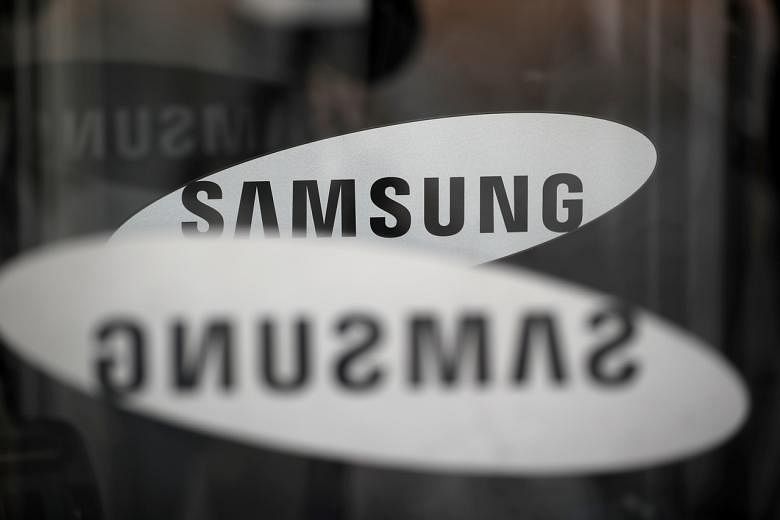SEOUL (BLOOMBERG) - Samsung Electronics' quarterly earnings beat estimates after memory chip prices began to climb out of a persistent downturn.
The world's largest memory chip maker reported a 34 per cent fall in operating income to 7.1 trillion won (S$8.22 billion) in the three months ending December, according to preliminary results released Tuesday by the Suwon, South Korea-based company. That compares with the 6.49 trillion won average of analysts' estimates.
Company shares were mostly unchanged in early trading following the earnings guidance.
Global chip prices - the biggest determinant of Samsung's bottom line - have shown signs of escaping a protracted slump, helped along by the easing of trade tensions between the US and China and boosted by orders from data center operators. Demand for DRAM chips used in smartphones and servers is projected to rise in line with technology advances that require more and better silicon.
Wall Street has been predicting a recovery in semiconductor demand - hammered in 2019 by flagging mobile gadget sales and a slowing expansion in cloud computing -- and expects the market for computer and smartphone components will return to growth in the second half of 2020. Micron Technology Inc. told investors last month the worst was over for the memory-chip industry.
NAND prices improved sequentially and DRAM's descent slowed, even though the fourth quarter is a typically slow season, said Bloomberg Intelligence analyst Anthea Lai. A strong demand comeback from server customers may restore Samsung's inventory back to normal levels earlier than expected in 2020, she added.
Sales for the fiscal fourth quarter were 59 trillion won, falling shy of the 60.9 trillion won consensus projection. Samsung didn't provide net income or break out divisional performance, which it will do later this month when it releases final results.
Contract prices for 32-gigabyte DRAM server modules fell about 5.3 per cent in the December quarter, narrower than the 14 per cent slide of the September quarter, according to InSpectrum Tech. Prices for 128-gigabit MLC NAND flash memory chips held steady in the final three months of 2019.
Samsung shares soared 44 per cent in 2019 on expectations for an uptrend in demand in 2020. The growing shift toward 5G wireless technology and cloud computing will drive chip business growth, said CW Chung, head of Korea equity research for Nomura International in Seoul.
The company is spending more on the development of flexible organic light-emitting diode panels for smartphones, hoping to maintain its lead in the mobile display market. But its older LCD business shut some facilities after panel prices collapsed in the face of competition from Chinese suppliers such as BOE Technology Group.
"The division is likely to face that cost pressure in 2020 as well, but its overall operating income is poised to increase, driven by higher utilization rates for flexible OLED," Daishin Securities analyst Lee Su-bin said in a note on Dec 23.
In mobile devices, Samsung is expected to report lower-than-expected shipments of smartphones for the quarter but its average selling price probably increased thanks to the Galaxy Fold, a US$1,980 Android device that opens up like a book.
Samsung is expected to unveil on Feb 11 in San Francisco a second foldable device that folds into a square. The company's mainstream flagship device - whose name is rumored to be the Galaxy S20, a change in naming scheme - is also likely to be unveiled at that event.
Samsung said its devices accounted for 54 per cent of the global 5G smartphone market as of November 2019, after it shipped more than 6.7 million Galaxy 5G smartphones last year.

